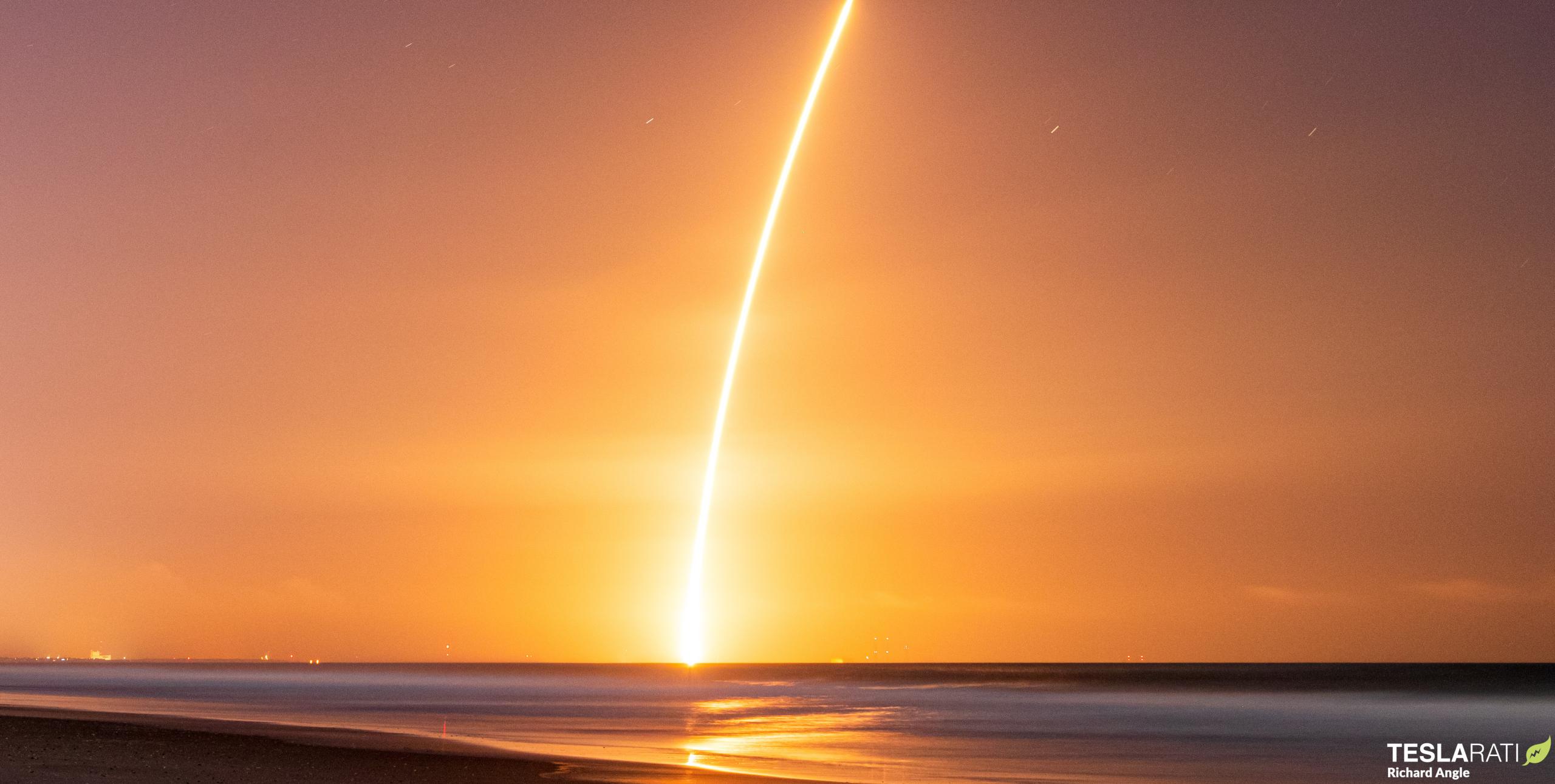
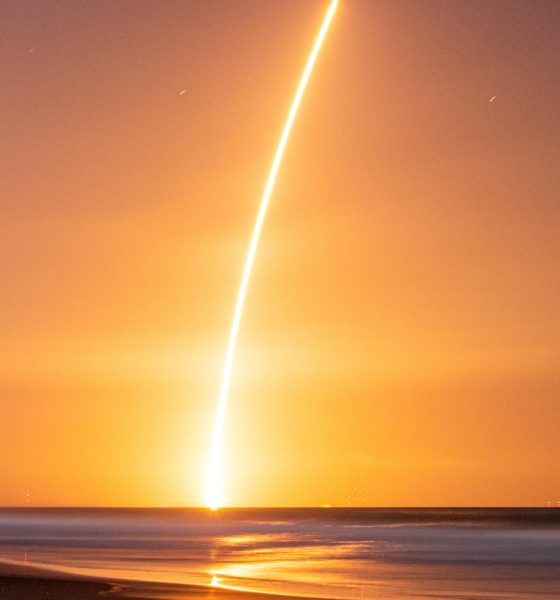
News
SpaceX launches Japanese lander, NASA cubesat to the Moon
A SpaceX Falcon 9 rocket has successfully launched a privately-developed Japanese Moon lander and a NASA Jet Propulsion Laboratory cubesat on their way to lunar orbit.
Following five back-to-back delays that pushed the launch from November to mid-December, Falcon 9 lifted off with Japanese startup ispace’s first HAKUTO-R Moon lander on December 11th, kicking off a multi-month journey that will take the spacecraft more than 700,000 miles (1.1M km) away from Earth. It’s not the first time SpaceX has launched a mostly commercial Moon lander, and it won’t be the last. SpaceX’s first Moon lander launch happened in February 2019, when Falcon 9 launched Israeli company SpaceIL’s Beresheet Moon lander as a rideshare payload on Indonesia’s PSN-6 geostationary communications satellite. Beresheet failed just a minute or two before touchdown, but the attempt was still a historic step for commercial spaceflight.
Just shy of three years later, SpaceX has launched another private Moon lander. Unlike Beresheet, which made its way to the Moon from geostationary transfer orbit (GTO), HAKUTO-R was Falcon 9’s main payload, allowing the rocket to launch it directly into deep space. A Jet Propulsion Laboratory (JPL) cubesat that missed a long-planned ride on NASA’s first Space Launch System (SLS) rocket also joined the Moon lander as a Falcon 9 rideshare payload.
The update that's rolling out to the fleet makes full use of the front and rear steering travel to minimize turning circle. In this case a reduction of 1.6 feet just over the air— Wes (@wmorrill3) April 16, 2024
Approximately four months from now, both spacecraft will reach the end of similar low-energy ballistic transfer trajectories, at which point they will have limited opportunities to enter lunar orbit and continue their missions. Reaching that checkpoint will require several successful orbital correction maneuvers and enough longevity to survive months in deep space, unprotected by Earth’s magnetic fields.
If they make it that far, HAKUTO-R will conduct several more burns to reach low lunar orbit (LLO), where ispace will verify the spacecraft’s health and eventually attempt a soft landing on the Moon. A privately-developed spacecraft has never landed on an extraterrestrial body, so the prestige at stake is about as high as it can get. If JPL’s Lunar Flashlight spacecraft [PDF] survives its journey, it will enter a near-rectilinear halo orbit around a point of gravitational equilibrium (Lagrange point) between the Earth and Moon. Once on station, it will spend most of its time 9000 kilometers (~5600 mi) away from the Moon but occasionally fly within 15 kilometers (~9 mi) of the surface. Under JPL’s nominal mission plan, Lunar Flashlight will complete at least ten week-long orbits and use an infrared laser instrument to search for water ice in permanently-shadowed Moon craters during each close approach.
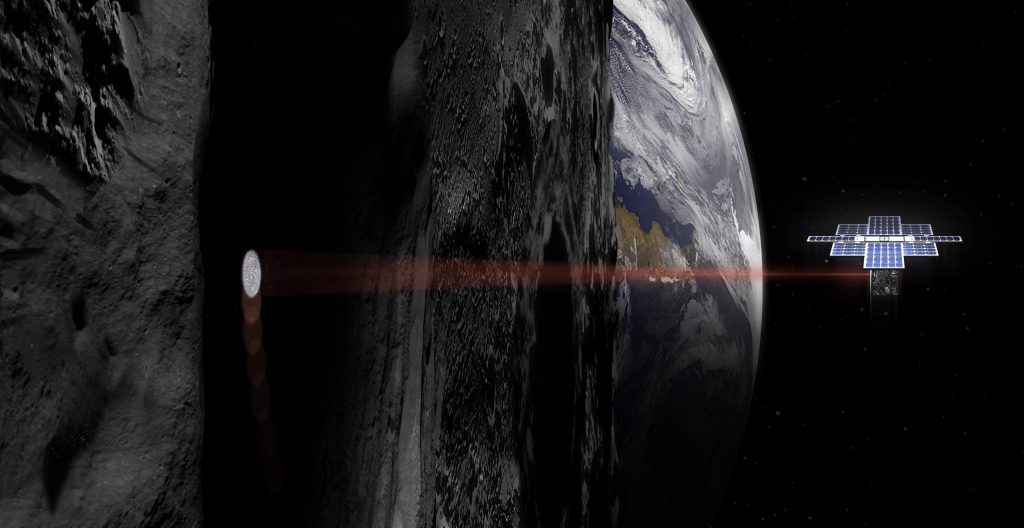
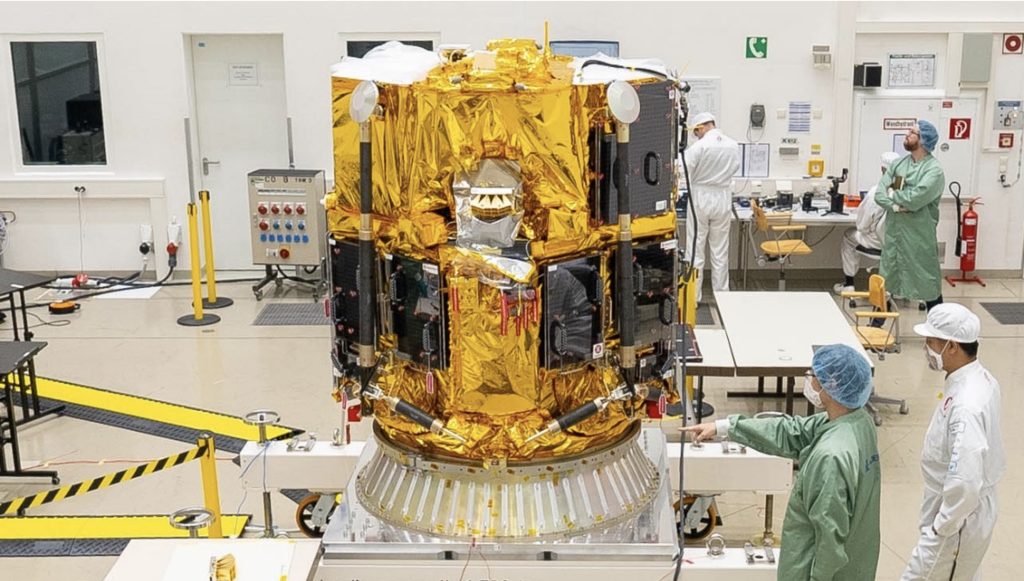
Without context, both missions seem to complement each other well, and it’s not hard to imagine an alternative scenario where a cubesat like Lunar Flashlight was intentionally included to prospect for ice that a lander could then target. But the JPL cubesat’s presence on ispace’s HAKUTO-R was purely by accident. Because of certain design decisions made by NASA’s Space Launch System (SLS) rocket and Orion spacecraft contractors, the giant rocket is intended to launch cubesat rideshare payloads to the Moon, but those satellites are barely accessible for the entire time the rocket is configured for its unprecedentedly slow launch campaigns.
As a result, even though SLS lifted off for the first time in November 2022, its cubesat payloads had to be ready for launch and installed on the rocket in October 2021. Out of 14 planned payloads, four – including Lunar Flashlight – weren’t ready in time, forcing them to find other ways to deep space. Ironically, that may have been an unexpected blessing, as the ten payloads that did make the deadline wound up sitting inside SLS for 13 months, much of which was spent at the launch pad. Half of those satellites appear to have partially or completely failed shortly after launch.
Because of the extremely circuitous path the NASA rocket ultimately took to reach launch readiness, JPL was able to find a new ride to the Moon and launch less than one month after SLS and its co-passengers. Unlike those copassengers, Lunar Flashlight likely spent just a few weeks installed on Falcon 9 before launching to the Moon. Additionally, the SLS launch trajectory took it more or less directly to the Moon, giving its rideshare payloads just a handful of days to troubleshoot any problems discovered. Thanks to the slower, more efficient transfer orbit SpaceX used to launch HAKUTO-R, JPL should still have opportunities to enter a nominal orbit even if Lunar Flashlight requires weeks of in-space troubleshooting – far more margin for error than most SLS copassengers received.
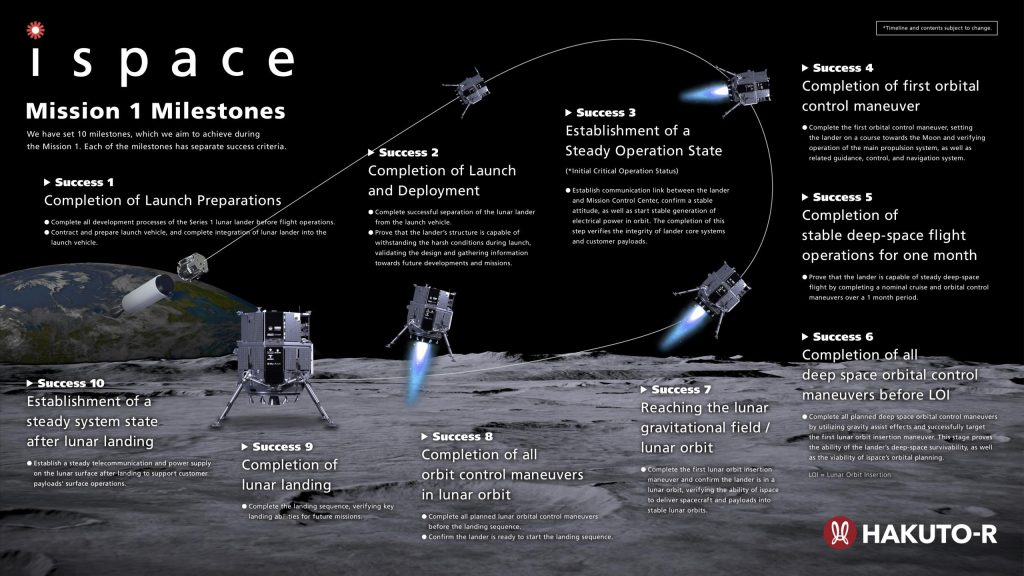
Lunar Flashlight weighs about 14 kilograms (~31 lb) at liftoff, features two sets of solar arrays, and packs a first-of-its-kind chemical propulsion system designed to deliver up to 290 m/s of delta-V – a ton of performance for such a small satellite. HAKUTO-R weighs closer to 1.1 tons (~2400 lb) and is a far more capable spacecraft, in theory – a necessity to land softly on the Moon. At ispace’s request, Falcon 9’s low-energy ballistic transfer orbit reduced the lander’s performance requirements, but it will need roughly 2000-2500 m/s of delta-V to enter lunar orbit and land on the lunar surface.
On December 12th, ispace confirmed that HAKUTO-R is in excellent shape around 24 hours after liftoff. ispace says the lander has secured stable communications, a stable orientation in space, and positive power generation from its solar arrays. An ispace infographic indicates that the spacecraft will enter lunar orbit around mid-April if all goes to plan. With HAKUTO-R in a stable state, the next most important near-term milestone will be the successful use of its propulsion and navigation systems. The startup hopes to demonstrate smooth deep space operations, including routine trajectory correction maneuvers, within one month of launch.
HAKUTO-R was SpaceX’s 56th successful launch of 2022 and the company’s second direct Moon launch this year after sending South Korea’s KPLO orbiter to the Moon in August.
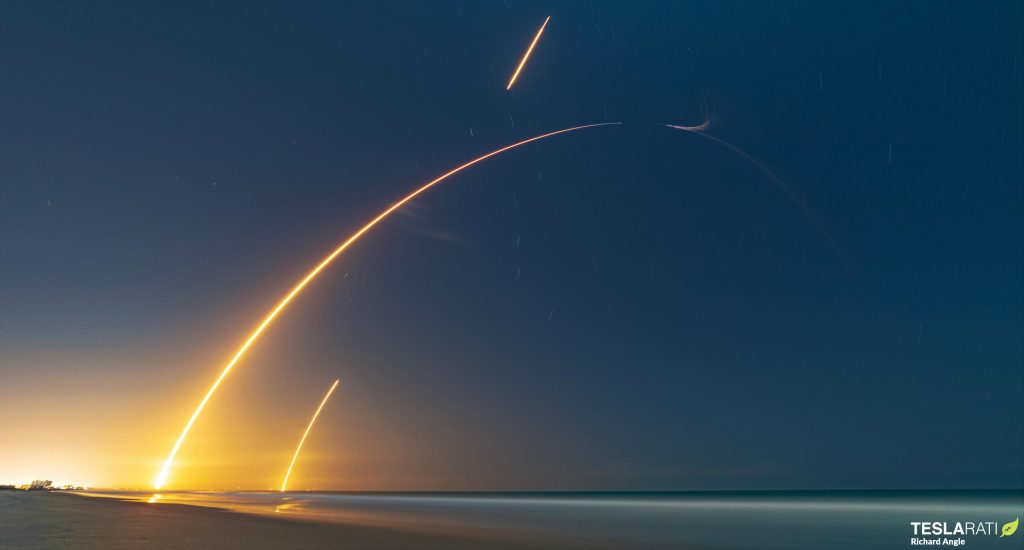
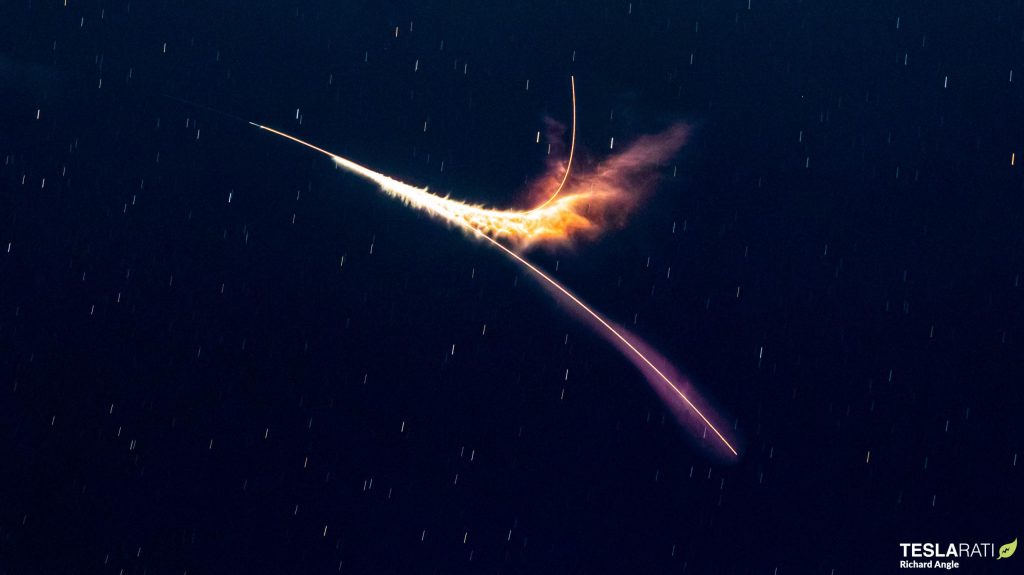
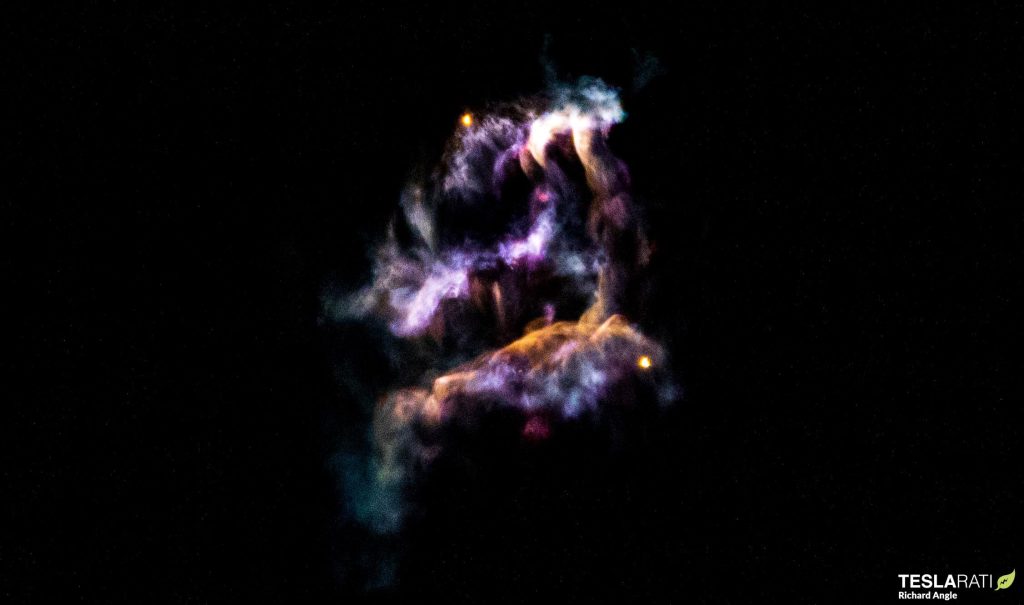

News
Tesla Model 3 named New Zealand’s best passenger car of 2025
Tesla flipped the switch on Full Self-Driving (Supervised) in September, turning every Model 3 and Model Y into New Zealand’s most advanced production car overnight.

The refreshed Tesla Model 3 has won the DRIVEN Car Guide AA Insurance NZ Car of the Year 2025 award in the Passenger Car category, beating all traditional and electric rivals.
Judges praised the all-electric sedan’s driving dynamics, value-packed EV tech, and the game-changing addition of Full Self-Driving (Supervised) that went live in New Zealand this September.
Why the Model 3 clinched the crown
DRIVEN admitted they were late to the “Highland” party because the updated sedan arrived in New Zealand as a 2024 model, just before the new Model Y stole the headlines. Yet two things forced a re-evaluation this year.
First, experiencing the new Model Y reminded testers how many big upgrades originated in the Model 3, such as the smoother ride, quieter cabin, ventilated seats, rear touchscreen, and stalk-less minimalist interior. Second, and far more importantly, Tesla flipped the switch on Full Self-Driving (Supervised) in September, turning every Model 3 and Model Y into New Zealand’s most advanced production car overnight.
FSD changes everything for Kiwi buyers
The publication called the entry-level rear-wheel-drive version “good to drive and represents a lot of EV technology for the money,” but highlighted that FSD elevates it into another league. “Make no mistake, despite the ‘Supervised’ bit in the name that requires you to remain ready to take control, it’s autonomous and very capable in some surprisingly tricky scenarios,” the review stated.
At NZ$11,400, FSD is far from cheap, but Tesla also offers FSD (Supervised) on a $159 monthly subscription, making the tech accessible without the full upfront investment. That’s a game-changer, as it allows users to access the company’s most advanced system without forking over a huge amount of money.
News
Tesla starts rolling out FSD V14.2.1 to AI4 vehicles including Cybertruck
FSD V14.2.1 was released just about a week after the initial FSD V14.2 update was rolled out.

It appears that the Tesla AI team burned the midnight oil, allowing them to release FSD V14.2.1 on Thanksgiving. The update has been reported by Tesla owners with AI4 vehicles, as well as Cybertruck owners.
For the Tesla AI team, at least, it appears that work really does not stop.
FSD V14.2.1
Initial posts about FSD V14.2.1 were shared by Tesla owners on social media platform X. As per the Tesla owners, V14.2.1 appears to be a point update that’s designed to polish the features and capacities that have been available in FSD V14. A look at the release notes for FSD V14.2.1, however, shows that an extra line has been added.
“Camera visibility can lead to increased attention monitoring sensitivity.”
Whether this could lead to more drivers being alerted to pay attention to the roads more remains to be seen. This would likely become evident as soon as the first batch of videos from Tesla owners who received V14.21 start sharing their first drive impressions of the update. Despite the update being released on Thanksgiving, it would not be surprising if first impressions videos of FSD V14.2.1 are shared today, just the same.
Rapid FSD releases
What is rather interesting and impressive is the fact that FSD V14.2.1 was released just about a week after the initial FSD V14.2 update was rolled out. This bodes well for Tesla’s FSD users, especially since CEO Elon Musk has stated in the past that the V14.2 series will be for “widespread use.”
FSD V14 has so far received numerous positive reviews from Tesla owners, with numerous drivers noting that the system now drives better than most human drivers because it is cautious, confident, and considerate at the same time. The only question now, really, is if the V14.2 series does make it to the company’s wide FSD fleet, which is still populated by numerous HW3 vehicles.
News
Waymo rider data hints that Tesla’s Cybercab strategy might be the smartest, after all
These observations all but validate Tesla’s controversial two-seat Cybercab strategy, which has caught a lot of criticism since it was unveiled last year.
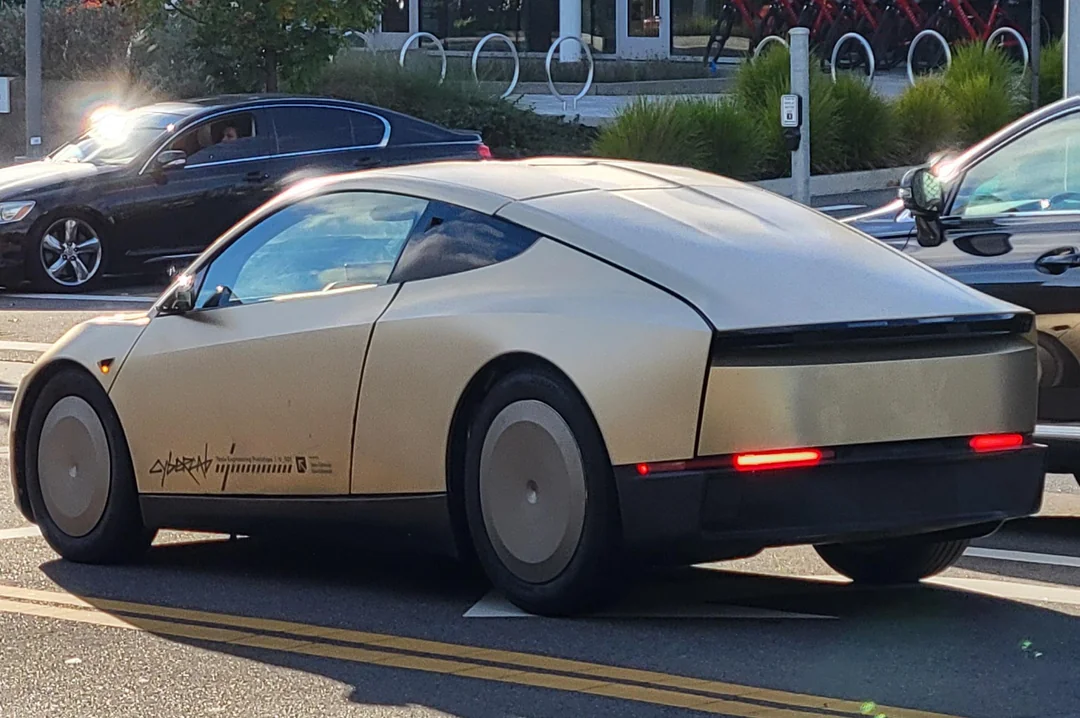
Toyota Connected Europe designer Karim Dia Toubajie has highlighted a particular trend that became evident in Waymo’s Q3 2025 occupancy stats. As it turned out, 90% of the trips taken by the driverless taxis carried two or fewer passengers.
These observations all but validate Tesla’s controversial two-seat Cybercab strategy, which has caught a lot of criticism since it was unveiled last year.
Toyota designer observes a trend
Karim Dia Toubajie, Lead Product Designer (Sustainable Mobility) at Toyota Connected Europe, analyzed Waymo’s latest California Public Utilities Commission filings and posted the results on LinkedIn this week.
“90% of robotaxi trips have 2 or less passengers, so why are we using 5-seater vehicles?” Toubajie asked. He continued: “90% of trips have 2 or less people, 75% of trips have 1 or less people.” He accompanied his comments with a graphic showing Waymo’s occupancy rates, which showed 71% of trips having one passenger, 15% of trips having two passengers, 6% of trips having three passengers, 5% of trips having zero passengers, and only 3% of trips having four passengers.
The data excludes operational trips like depot runs or charging, though Toubajie pointed out that most of the time, Waymo’s massive self-driving taxis are really just transporting 1 or 2 people, at times even no passengers at all. “This means that most of the time, the vehicle being used significantly outweighs the needs of the trip,” the Toyota designer wrote in his post.
Cybercab suddenly looks perfectly sized
Toubajie gave a nod to Tesla’s approach. “The Tesla Cybercab announced in 2024, is a 2-seater robotaxi with a 50kWh battery but I still believe this is on the larger side of what’s required for most trips,” he wrote.
With Waymo’s own numbers now proving 90% of demand fits two seats or fewer, the wheel-less, lidar-free Cybercab now looks like the smartest play in the room. The Cybercab is designed to be easy to produce, with CEO Elon Musk commenting that its product line would resemble a consumer electronics factory more than an automotive plant. This means that the Cybercab could saturate the roads quickly once it is deployed.
While the Cybercab will likely take the lion’s share of Tesla’s ride-hailing passengers, the Model 3 sedan and Model Y crossover would be perfect for the remaining 9% of riders who require larger vehicles. This should be easy to implement for Tesla, as the Model Y and Model 3 are both mass-market vehicles.









